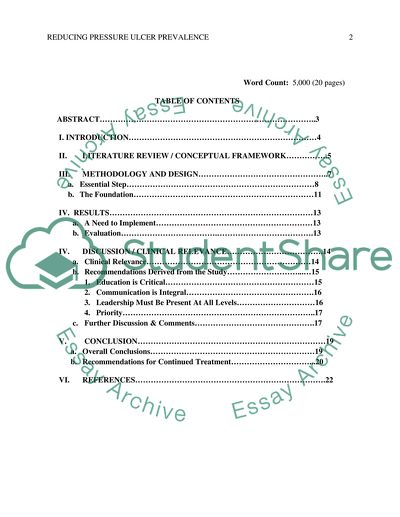Cite this document
(Reducing Pressure Ulcer Prevalence: Nursing Success and Priority Research Paper - 1, n.d.)
Reducing Pressure Ulcer Prevalence: Nursing Success and Priority Research Paper - 1. Retrieved from https://studentshare.org/nursing/1750459-pressure-ulcer-prevalence-nursing-priority-and-success
Reducing Pressure Ulcer Prevalence: Nursing Success and Priority Research Paper - 1. Retrieved from https://studentshare.org/nursing/1750459-pressure-ulcer-prevalence-nursing-priority-and-success
(Reducing Pressure Ulcer Prevalence: Nursing Success and Priority Research Paper - 1)
Reducing Pressure Ulcer Prevalence: Nursing Success and Priority Research Paper - 1. https://studentshare.org/nursing/1750459-pressure-ulcer-prevalence-nursing-priority-and-success.
Reducing Pressure Ulcer Prevalence: Nursing Success and Priority Research Paper - 1. https://studentshare.org/nursing/1750459-pressure-ulcer-prevalence-nursing-priority-and-success.
“Reducing Pressure Ulcer Prevalence: Nursing Success and Priority Research Paper - 1”, n.d. https://studentshare.org/nursing/1750459-pressure-ulcer-prevalence-nursing-priority-and-success.


